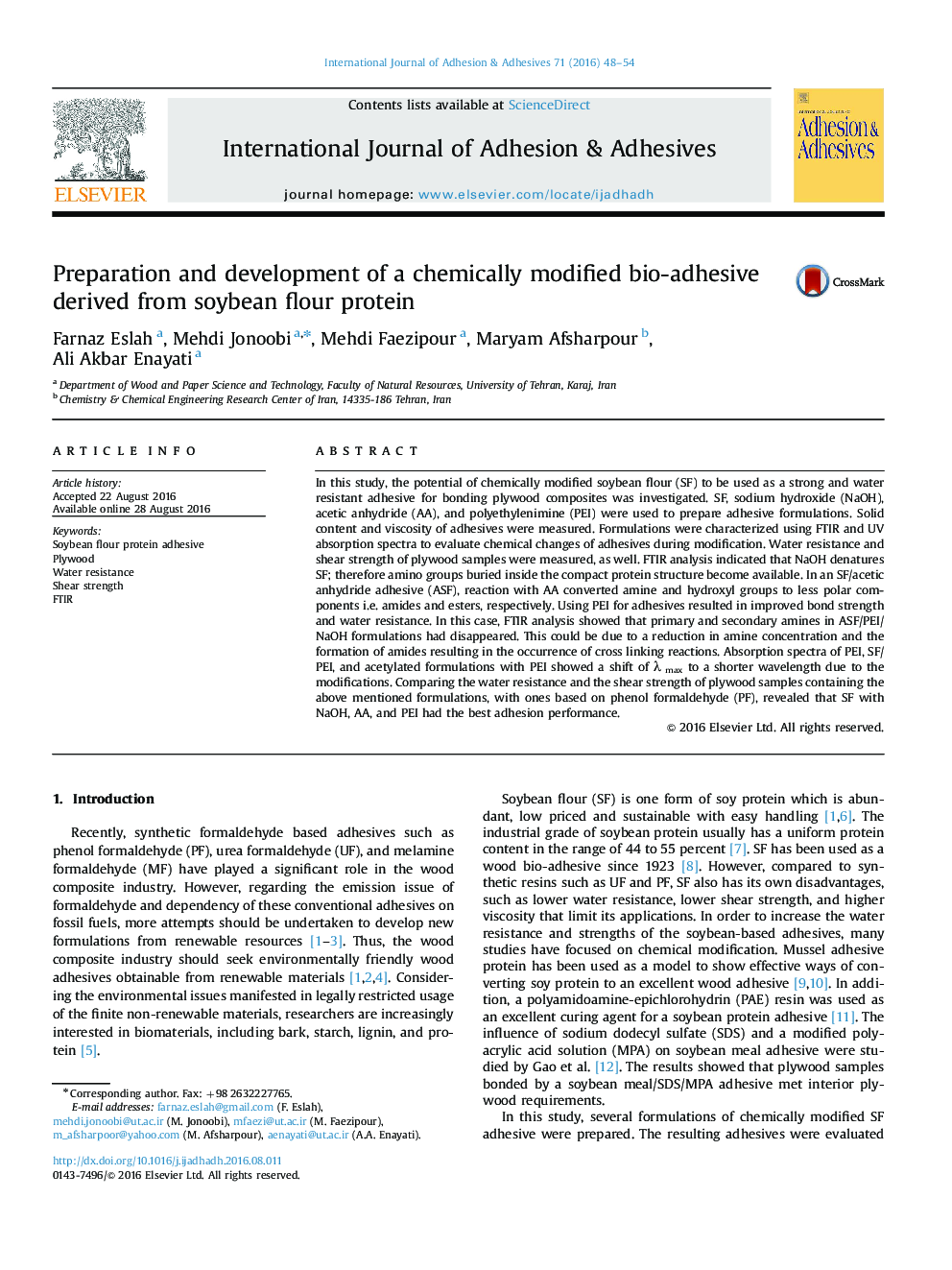| Article ID | Journal | Published Year | Pages | File Type |
|---|---|---|---|---|
| 7171034 | International Journal of Adhesion and Adhesives | 2016 | 7 Pages |
Abstract
In this study, the potential of chemically modified soybean flour (SF) to be used as a strong and water resistant adhesive for bonding plywood composites was investigated. SF, sodium hydroxide (NaOH), acetic anhydride (AA), and polyethylenimine (PEI) were used to prepare adhesive formulations. Solid content and viscosity of adhesives were measured. Formulations were characterized using FTIR and UV absorption spectra to evaluate chemical changes of adhesives during modification. Water resistance and shear strength of plywood samples were measured, as well. FTIR analysis indicated that NaOH denatures SF; therefore amino groups buried inside the compact protein structure become available. In an SF/acetic anhydride adhesive (ASF), reaction with AA converted amine and hydroxyl groups to less polar components i.e. amides and esters, respectively. Using PEI for adhesives resulted in improved bond strength and water resistance. In this case, FTIR analysis showed that primary and secondary amines in ASF/PEI/NaOH formulations had disappeared. This could be due to a reduction in amine concentration and the formation of amides resulting in the occurrence of cross linking reactions. Absorption spectra of PEI, SF/PEI, and acetylated formulations with PEI showed a shift of λ max to a shorter wavelength due to the modifications. Comparing the water resistance and the shear strength of plywood samples containing the above mentioned formulations, with ones based on phenol formaldehyde (PF), revealed that SF with NaOH, AA, and PEI had the best adhesion performance.
Related Topics
Physical Sciences and Engineering
Engineering
Mechanical Engineering
Authors
Farnaz Eslah, Mehdi Jonoobi, Mehdi Faezipour, Maryam Afsharpour, Ali Akbar Enayati,
